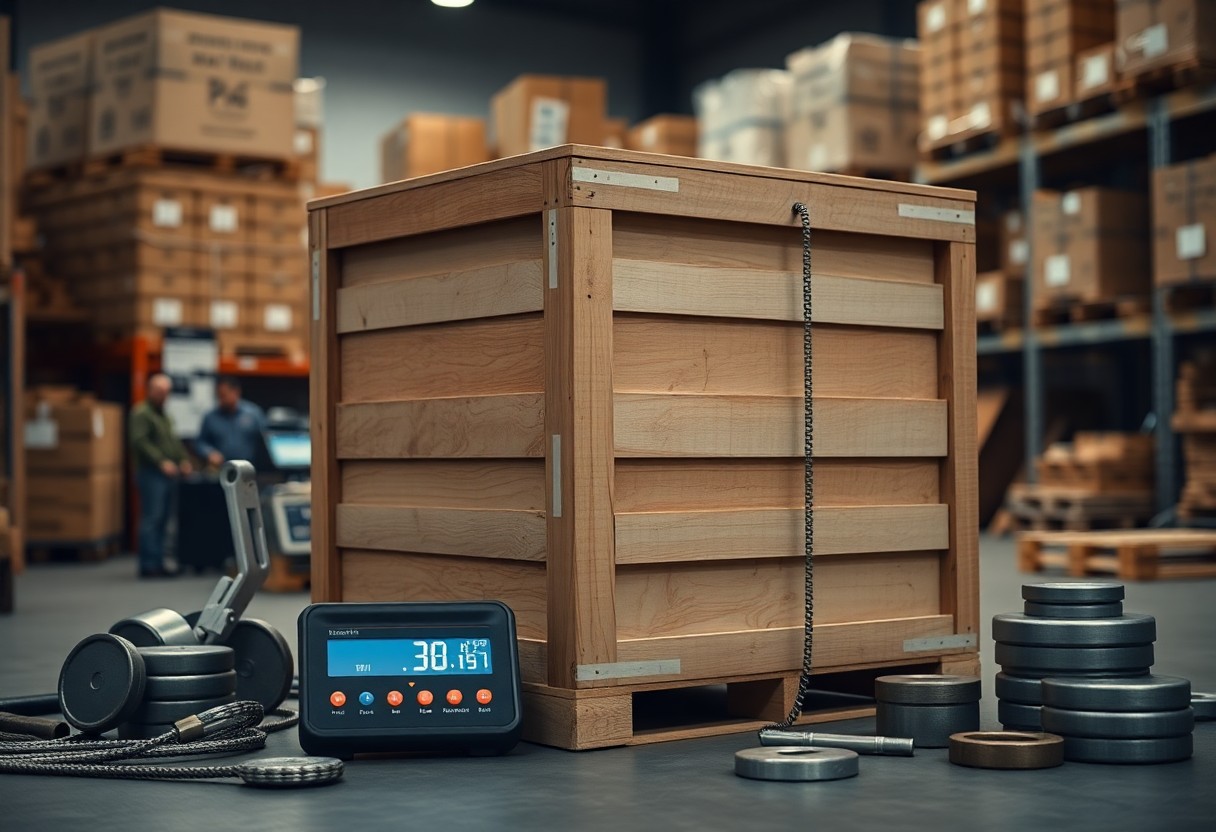It’s necessary to understand the weight of acacia wood for your projects, whether you’re crafting furniture or building a deck.
This informative post will guide you through the Acacia Wood Weight Calculator, helping you accurately determine the weight based on your specific dimensions and type of acacia wood. By utilizing this tool, you can ensure you have the right materials on hand, facilitating a smooth and efficient project execution. Let’s look into the details so you can make well-informed decisions every step of the way.
Acacia Wood Weight Calculator

While exploring the world of woodworking, understanding Acacia wood is necessary.
Known for its durability and stunning appearance, this hardwood comes from various species of the Acacia tree, primarily found in tropical and subtropical regions.
Its distinctive grain patterns and rich colors make it a popular choice for both functional and decorative projects, offering a blend of beauty and strength that suits various applications.
Properties of Acacia Wood
On the whole, Acacia wood exhibits a range of properties that make it appealing for various uses. It is robust, resistant to wear and tear, and has natural water-resistant qualities.
Additionally, its density contributes to its exceptional strength, making it suitable for both indoor and outdoor applications. Drying and finishing processes can enhance its natural beauty, providing a luxurious finish that attracts attention and admiration.
Common Uses of Acacia Wood
Uses of Acacia wood include a broad spectrum of applications, from furniture to kitchenware. Its attractive appearance and resilience make it ideal for crafting tables, chairs, and cabinetry.
Additionally, Acacia is often employed in creating cutting boards, serving platters, and other culinary tools, where both style and function are paramount.
Acacia wood is not just limited to furniture; you can find it in flooring, decorative wall panels, and even musical instruments such as guitars.
The natural oils within the wood offer a level of protection against moisture, making it ideal for outdoor furniture and environments. With its stunning hues and grain patterns, Acacia adds a touch of elegance to any space, making it a favored choice among artisans and DIY enthusiasts alike.
The Importance of Weight Calculation
Assuming you’re working with acacia wood, accurately calculating its weight is imperative for your project’s success.
Understanding weight not only helps in determining the amount of material needed but also influences your project’s stability and longevity.
Precise weight calculations guide you in selecting appropriate tools, ensuring safe handling, and estimating transportation costs.
Why Weight Matters in Wood Projects
Around various woodworking initiatives, the weight of the wood you select can significantly affect how your project turns out.
Heavier wood provides more durability, while lighter options may contribute to easier handling. Knowing the weight allows you to better plan your designs and structural integrity.
Factors Affecting Acacia Wood Weight
Across the spectrum of acacia wood types, several factors influence the overall weight. These can include:
- Moisture content
- Wood density
- Type of acacia species
- Age of the tree
Recognizing these elements can help you make informed decisions regarding your wood choices.
Wood density is perhaps the most significant aspect affecting weight. Denser varieties of acacia will weigh more, which can impact how you approach your projects.
Additionally, factors such as the moisture level can alter the density significantly, leading to varying weights even among similar pieces. Take into account the unique characteristics of the acacia wood you choose:
- Condition of the wood
- Presence of knots or blemishes
- Treatment or finish applied
Recognizing these factors ensures you are well-prepared for your woodworking endeavors.
Acacia Wood Weight Calculator Overview
Once again, understanding the weight of Acacia wood is vital for various projects, whether you’re crafting furniture or handling lumber.
An Acacia wood weight calculator serves as a practical tool that helps you determine the weight of this dense hardwood based on its dimensions and moisture content.
By inputting the necessary data, you can make well-informed decisions, ensuring your projects proceed smoothly and efficiently.
How to Use the Weight Calculator
About utilizing the weight calculator is straightforward. You simply input the dimensions of your Acacia wood—length, width, and thickness—along with the moisture content percentage.
The calculator then uses this information to provide you with an accurate weight estimate, facilitating better planning and material management for your projects.
Features of an Effective Calculator
Overview, an effective wood weight calculator should be user-friendly and precise, delivering quick results with minimal input.
Look for features like value adjustments for varying moisture content, options to convert between imperial and metric units, and accessibility on various devices.
These elements enhance your experience, allowing you to focus on your project without unnecessary hassle.
Calculator features like accuracy in weight estimations and a flexible interface make it an invaluable asset for woodworkers and DIY enthusiasts. Additional functionalities, such as a built-in library of wood species weight averages, can guide you in selecting the best materials for your design.
Ultimately, an effective calculator simplifies complex computations, allowing you to concentrate on bringing your woodwork ideas to life.
Step-by-Step Weight Calculation
Now, follow these simple steps to accurately calculate the weight of your Acacia wood. By assessing the dimensions and applying the right density, you can achieve an exact measurement. Refer to the table below for guidance:
| Step | Description |
|---|---|
| 1 | Measure the dimensions of the wood. |
| 2 | Use the density of Acacia wood for calculations. |
| 3 | Calculate the weight using the formula. |
Measuring Dimensions
The first step in calculating the weight of your Acacia wood involves accurately measuring its dimensions. You should take precise measurements of the length, width, and thickness in inches or centimeters. This data is imperative, as it directly influences the volume calculation, which is a key component in determining the weight of the wood.
Calculating Weight Using Density
Dimensions play a significant role in determining the overall weight of your Acacia wood. Once you have measured the wood, you can calculate its volume by multiplying the length, width, and thickness.
The density of Acacia wood is typically around 0.5 to 0.6 grams per cubic centimeter, or about 30 to 35 pounds per cubic foot. Using the volume and density, you can find the weight effortlessly.
Calculation is straightforward. After obtaining the volume of the wood, multiply it by the density to get your wood’s weight. For example, if you have a piece of Acacia wood with a volume of 1 cubic foot, multiplying by a density of 35 pounds per cubic foot would yield a weight of 35 pounds.
This method ensures accuracy in estimating the weight, which is helpful for various woodworking projects or shipping considerations.
Applications of Weight Calculations
To enhance your projects, understanding the weight of acacia wood is key. Accurate weight calculations can significantly influence material selection, cost estimation, and even structural integrity in your various applications.
Whether you’re crafting furniture or engaging in construction, knowing how to calculate the weight can streamline your processes and achieve better results.
Furniture Making
Furniture crafted from acacia wood not only showcases beauty but also durability. By knowing the weight of the wood, you can design pieces that are both aesthetically pleasing and structurally sound, ensuring that your furniture can withstand daily use without compromise.
Construction and Crafting
Behind any successful project is a solid understanding of material properties, especially in construction and crafting.
The weight of acacia wood can affect your design choices, load-bearing calculations, and even transportation logistics. With accurate weight measurements, you can avoid overloading structures and ensure your crafted items maintain their integrity.
To further optimize your crafting endeavors, consider how the weight of acacia wood impacts both the assembly and the finished product. By calculating the weight effectively, you enable smart design decisions that correspond with both functionality and visual appeal.
Whether you’re building sturdy frameworks or delicate wooden art pieces, keeping weight in mind ensures that your results are dependable and of high quality.
Tips for Accurate Measurements
Unlike a simple calculation, achieving accurate measurements of Acacia wood requires attention to detail. To improve your results, consider these tips:
- Ensure your measuring tools are calibrated.
- Take multiple measurements at different points.
- Use a level surface to avoid distortions.
- Account for moisture content in the wood.
Recognizing the importance of precision can greatly affect the outcome of your weight calculations.
Tools Required
Around your workspace, you will need some important tools to measure Acacia wood accurately. A reliable tape measure, a digital scale for weight, and a moisture meter are key items to have on hand.
Additionally, having a caliper may help with measuring thickness and dimensions precisely. Investing in quality tools will yield better calculations and ensure you get the most accurate results.
Common Mistakes to Avoid
With calculating the weight of Acacia wood, it’s important to be aware of potential pitfalls. Many people mistakenly overlook the impact of variations in wood density and moisture levels.
Not taking the time to measure different pieces can lead to inaccurate averages. Additionally, failing to zero out the scale before weighing can cause discrepancies in your results.
Even a slight oversight can lead to significant errors in your calculations. Make sure you consistently check your tools, accurately note the measurements, and clarify the type of wood you are working with.
Taking the time to double-check your inputs will ensure your weight calculation is as precise as possible.
Conclusion
So, using the Acacia Wood Weight Calculator can simplify your project planning and ensure you have a precise understanding of the materials you’ll be working with.
By accurately determining the weight of your Acacia wood, you can better manage shipping, storage, and handling requirements. With this tool at your disposal, you can enhance your efficiency and confidence in project execution, making it an invaluable resource for both professional and DIY enthusiasts in woodworking.








